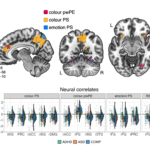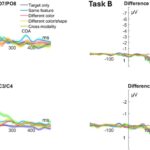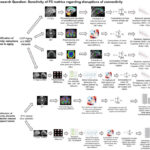Oldenburg, April 11 – Dr. Zhuanghua Shi recently visited Oldenburg University to give a talk on how our brains handle distractions. The talk, titled “Neural evidence of within- and cross-dimension visual distractor suppression,” shared some of the latest findings on the subject.
Hosted by Prof. Hans Colonius, Dr. Shi explained how the brain works to ignore things that might distract us, using simple everyday examples and recent studies. He used brain imaging techniques like EEG and fMRI to show how our brains react differently to distractions defined within or cross-dimensions. The studies showed that intra-dimensional distractor provokes the most significant delay in our reaction times, accompanied by a reduced target-elicited N2pc component – a neural marker of attentional focus. In contrast, the cross-dimensional and cross-modal distractors do not affect this component. Further investigation into manipulating the distractor spatial distribution shows that our ability to tune out same-dimensional distractors develops early on, as indicated by changes in the early N1pc component, and involves the brain’s early visual cortex. On the other hand, ignoring cross-dimensional color distractors engages higher color-processing brain regions within the fusiform gyrus, highlighting a more sophisticated neural adaptation to these types of distractions.
During his visit, the host, Professors Colonius and Diederich, also presented their most recent research on mathematical models in decision-making. The intellectual exchange was both stimulating and productive.





